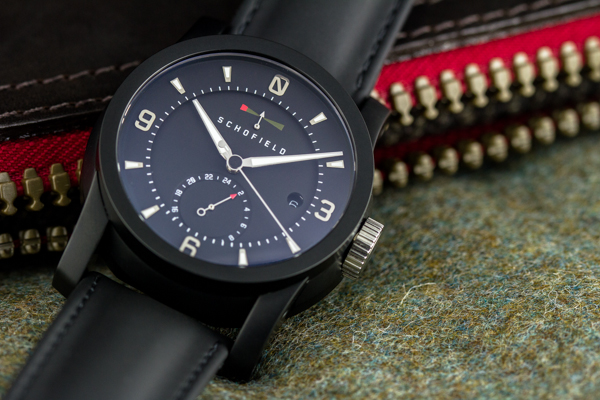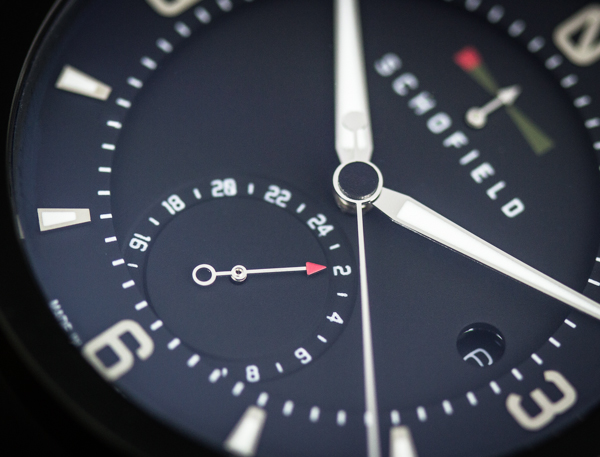
Operated via a single large crown and one integrated case button, the Signalman is powered by a the Soprod 9335 (A10 base) movement which is placed within a two piece antimagnetic movement mount. The 9335 is a Swiss automatic movement with a retrograde power reserve, sub dial for the GMT display and a date function. With 31 jewels, a power reserve of 42 hours and a rate of 28,800 vph, this A10-2 based movement is reliable and quite accurate. Not a watch for the hardcore traveler, the GMT hand is linked with the time display so if you advance the main time display, the GMT hand advances as well. The GMT feature is controlled via a recessed button in the lower right lug assembly. Designed to function with the use of an included tool (or perhaps a toothpick), this design is not as convenient as some and might be a bit of a pain if you were jumping through many timezones in a short period. The display is a small sub dial at six that is partially overlapped by the outer dial ring. Regardless of the overlap, the scale still functions for the GMT display thanks to careful balancing in the size of both displays (minute and GMT scale). The GMT hand has a red arrowhead tip and a lovely circular counterpoise at the other end. A similar shape (and size) is used in the counterpoise for the seconds hand. Dial text is limited to the branding and a small “Made in Germany” line below the six o’clock marker. Accuracy on the review model was excellent and well within chronometer performance. Swiss timing, German construction and English design, that is a solid formula.
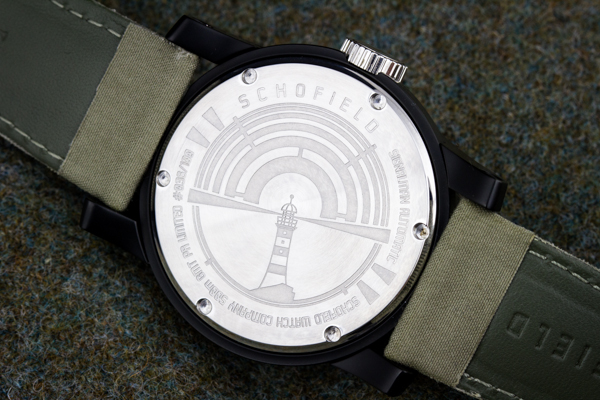
Like a lighthouse, the case has a wide set base that builds to a chamfer that draws inward to integrate the top of the case and the complex shape of the lugs. Take a close look at the photos as the lug shape is beautifully integrated into the two pieces that make up the upper and lower case. The lugs feature screwed bars that make strap changes a simple and, with a little patience, scratch free process.
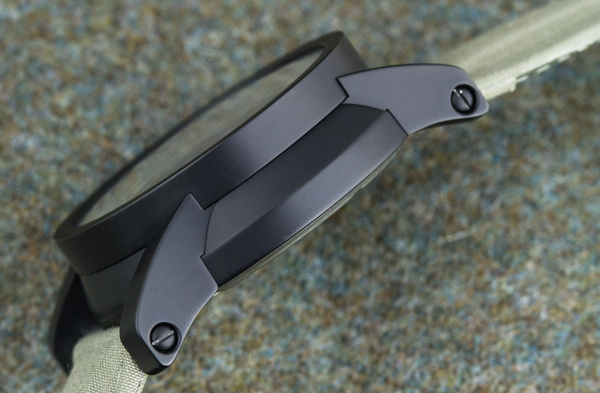
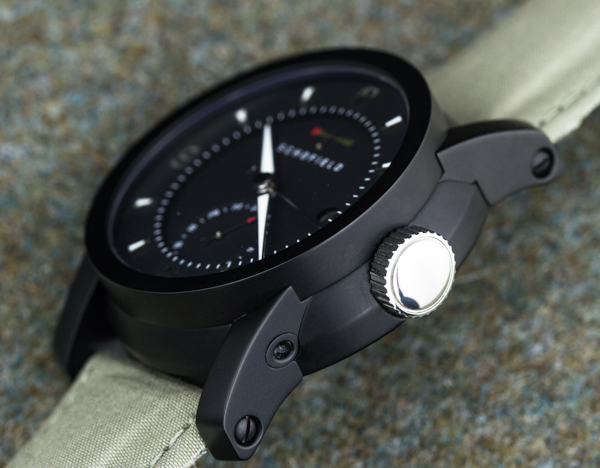
The DLC (diamond like carbon) treatment on the Signalman is unlike any I’ve ever seen. So smooth and well executed you would swear it’s teflon or that the case is finished with a ceramic treatment like the Blancpain Bathyscaph. I’ve seen a lot of watches with black PVD or DLC coatings, and while DLC is often preferable, the Signalman elevates this treatment to an new level. While one can find flawless polished DLC treatments from brands like Seiko, the Schofield Signalman exhibits a matte microbille finish that soaks up light and can even appear to have a slightly brownish hue under sunlight. As much as I enjoyed the polished finish on the sister version, the DLC Signalman is easily my favorite. The quality and success of the DLC treatment on the Signalman was no random happenstance, Giles is a total nerd about these treatments and even wrote a piece for WatchPro on the subject.
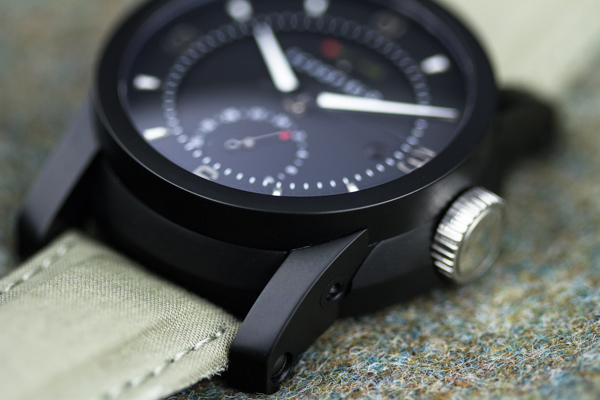
Not only is the microbille DLC finish quite attractive, it’s also very scratch resistant. The DLC coating boasts a hardness of 4500Hv, which is several times harder than untreated stainless steel (approximately 225Hv). The case blends beautifully with the subtle tone of the dial and the contrast between the darker elements and the brightly polished markers and hands makes for a powerful wrist presence. The markers (non-numerals) and hands are treated with a luminous coating that is bright but not especially long lasting given the limited space for the luminous material. While not as good as a tool diver with oversized hands and markers, the lume on the Signalman is adequate and the hands and markers have polished edges that can be turned against available light for easy nighttime or movie theater reading.
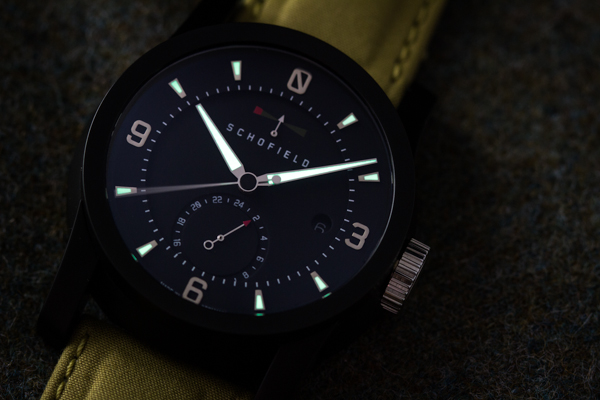
On wrist, the Signalman further differentiates itself from other watches. The combination of its unique case shape, black-hole-grade DLC coating and the brighter elements like the dial markers and the polished crown all work together as a cohesive whole. The strength of the Signalman’s design is best appreciated on wrist and, with a host of straps available for its 24mm lugs, I doubt this is a watch of which you would soon tire. Legibility of the main time display is excellent, with extra long hands that give the Signalman a pocket watch-like display. The GMT display is small but simple to read and the date, displayed at three, must be viewed directly as the aperture is quite small and the wheel is set deep under the dial. The aperture is small to protect the aesthetic balance of the dial and while the implementation may be a bit odd at first, I found it easy to read and many buyers consider a date display essential. While I don’t feel a date display is an essential feature, I’ll take a small aperture over an ugly cyclops any day. Thanks to the case shape, once your selected strap has broken in a bit, the Signalman sits nicely with a masculine presence that will likely be a touch too thick for a shirt cuff. Weight comes in at 132g on a canvas strap and I found the Signalman to be light enough for constant wear, even while typing or working with my hands.
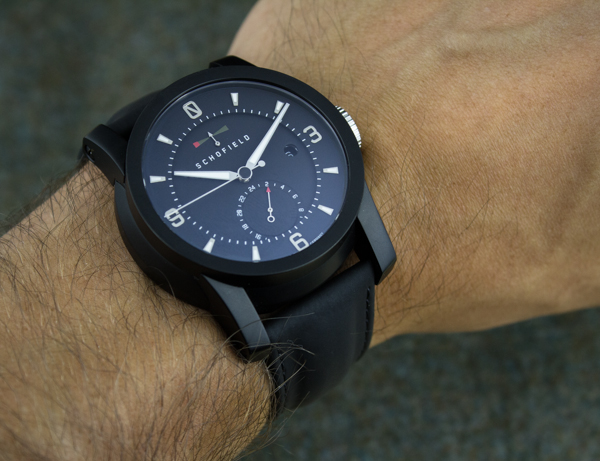
The Signalman GMT PR is a fantastically cool watch that will never be mistaken for anything else. It is the product of a very focused and determined design and I think the outcome is really great. Limited to 100 total units, many have already been sold at the £4050.00 (~$6120 USD, including VAT) asking price. While not a cheap watch, the Signalman presents a welcome departure for a potential buyer looking for an uncommon, quirky and well executed design that could easily (and to great effect) be worn every day.

